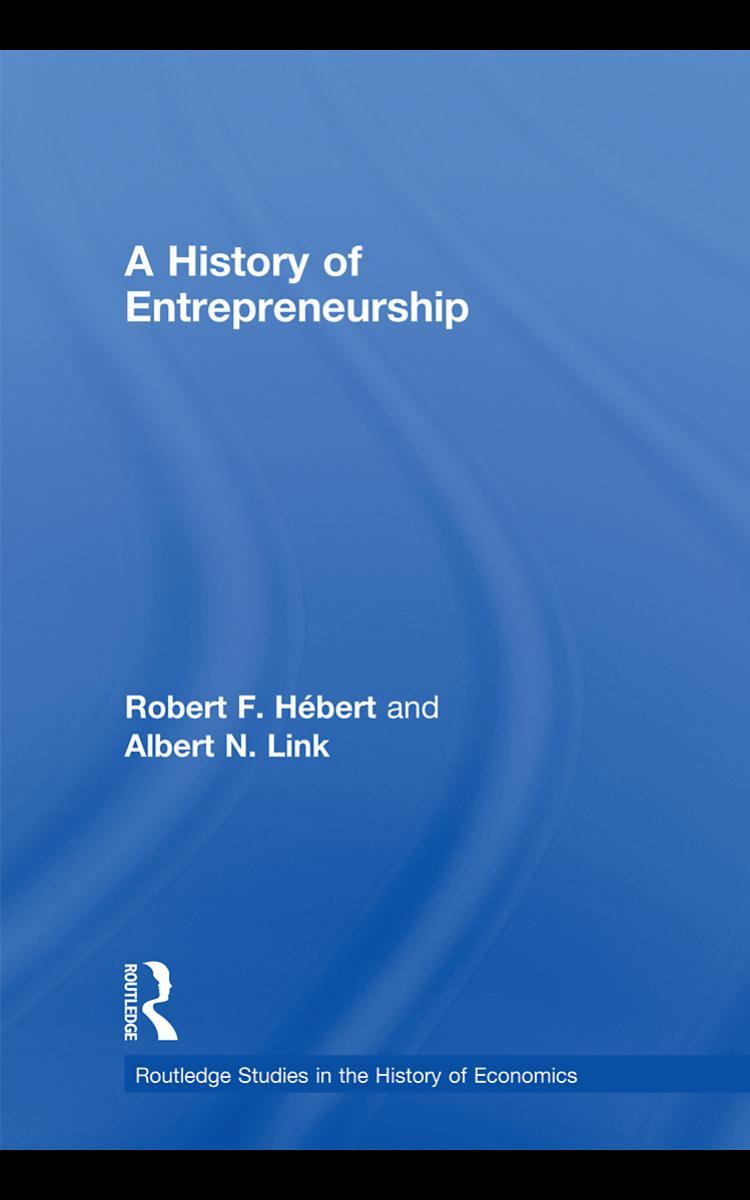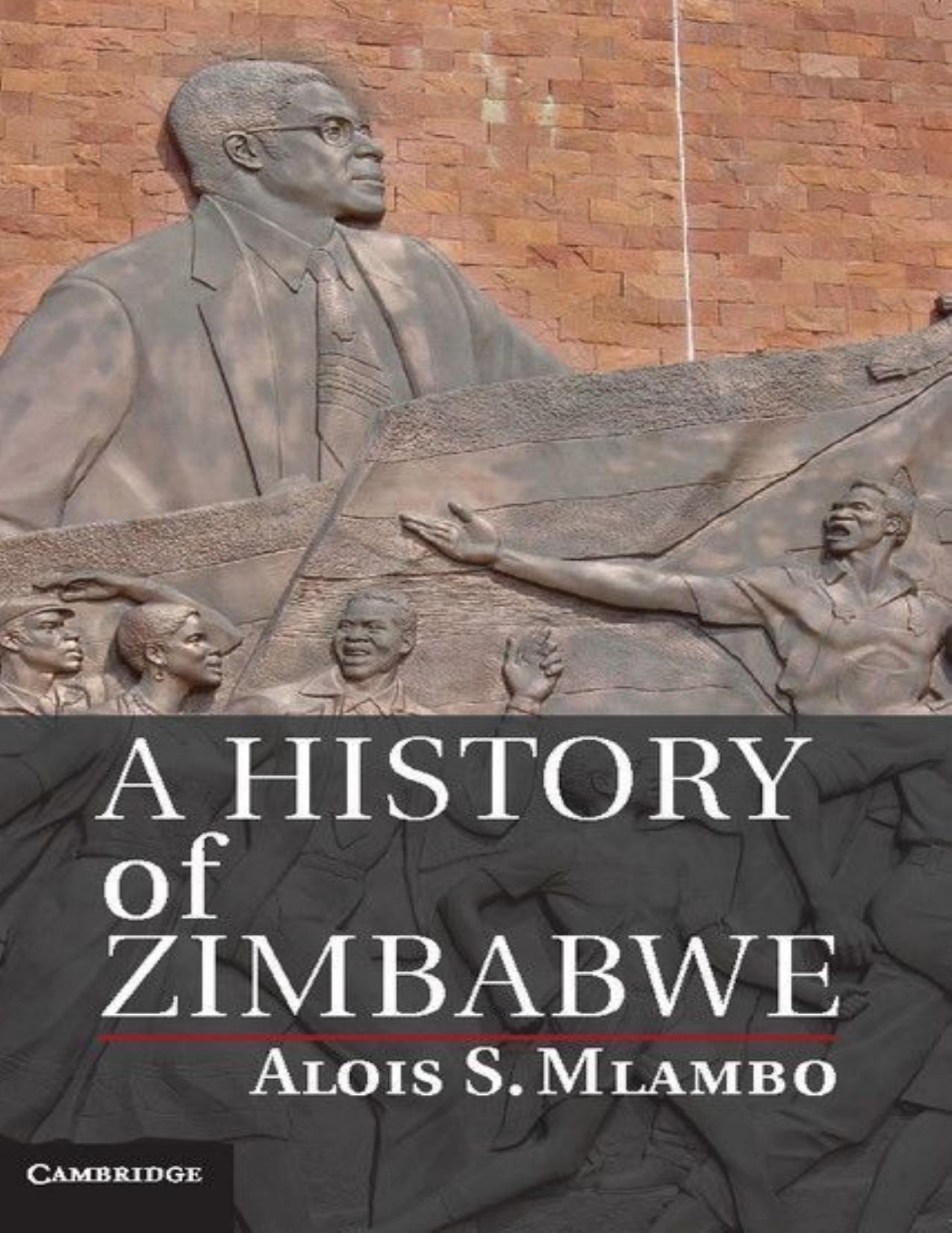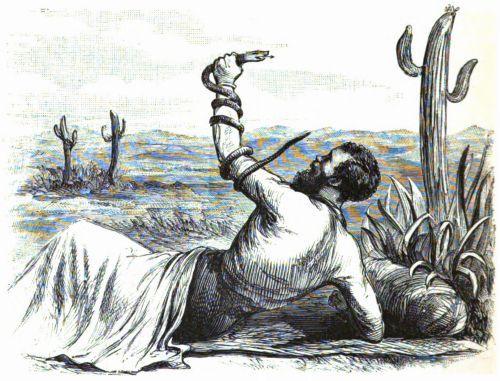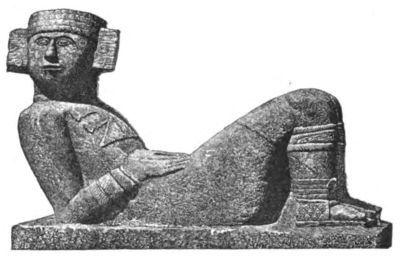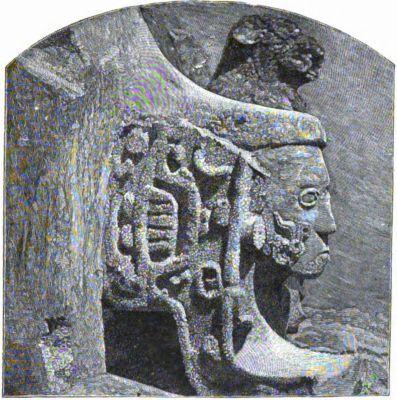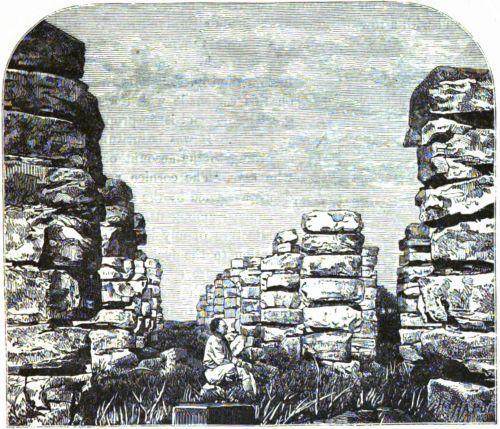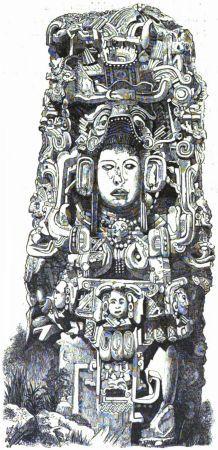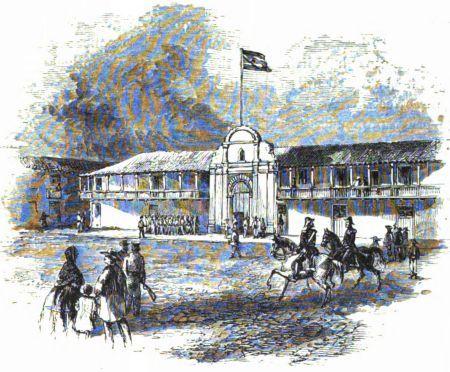Exploring the Variety of Random Documents with Different Content
attack dogs and other animals, and the poor creatures are sometimes killed by them. M. Charnay gives an account of how a pet dog belonging to the wife of the consul at Merida suffered from the bites of these insects while out one day in the country. The little animal rolled on the grass and howled in agony, but the garapatas kept on with their biting as though it was all fun to them."
AN UNWELCOME VISITOR.
Fred asked Mr. Burbank how many kinds of insects, troublesome and otherwise, Yucatan could boast, but the gentleman was unable to say with any exactness. "There is enough of them to go around," said he, "among the whole population, and some varieties go around with surprising activity when the heat and languor of the climate are considered. And if you camp out and sleep on the ground you may quite possibly be roused by a snake trying to get into bed with you and coiling around your arm or leg."
Our young friends were especially ambitions to discover a statue or some other interesting relic of the by-gone race, and so make themselves distinguished as explorers. But their inquiries as to the possibility and advisability of such a proceeding were greatly discouraged when they learned of the experience of Dr. Le Plongeon.
STATUE OF CHAC-MOOL.
"You doubtless saw the statue of Chac-Mool, the god of fire, in the museum at the capital?" said Mr. Burbank.
"Certainly," replied Fred.
"Well," continued Mr. Burbank, "Dr. Le Plongeon found that statue at ChichenItza, where he made extensive excavations at his own expense. It was nine feet in length—too large to be hidden in his coat-pocket, or in any other ordinary way and therefore he could not take it out of the country. The Government claims all antiquities, no matter by whom they are found, and the officials immediately took possession of Dr. Le Plongeon's 'find,' and paid no attention to his protest.
"The same explorer dug up a statue here in the summer of 1881, and describes it as the finest ever discovered in Central America. He and his wife were working alone when the treasure was unearthed, and with the recollections of the Chac-Mool experience before them, they immediately covered up the precious discovery, and removed all trace of their work.
"Learning wisdom by their experience, I would advise against any serious expenditure of time and money in exploring the remains of Uxmal or any other of the sixty or more ruined cities of Yucatan. If you find anything of value it will go into the hands of the Mexican Government and adorn the museum at the national capital. Antiquities of no value can be taken to New York or elsewhere after paying certain duties upon them for exportation."
Frank and Fred thought the advice excellent, and thanked Mr. Burbank for it. They confined their investigations to making sketches and photographs of the sculptures, and measuring the buildings and the apartments in them. They did not undertake any digging operations, and listened calmly to the stories of the
natives concerning the vast amount of treasures supposed to be concealed in the ruins of the buildings.
It may be remarked here that the natives were very unwilling to remain around the ruins at night, and all of them who could do so hurried to the hacienda of Uxmal immediately after sunset. They believe that the ghosts of the former occupants revisit the ruins at night, and treat with great severity any one whom they find there.
In support of their belief they told several stories of how Indians who had ventured to spend the night in the ruins had disappeared and no trace of them had ever been found. In other cases their dead bodies were found in some of the rooms of the old buildings, and in each instance the marks on their throats showed that they had been strangled at the hands of the ghosts. A dead Indian was found in a tree-top, where it was impossible to have climbed, or been placed by human hands; the inference was that the ghosts had killed the rash man, and then carried his body into the tree-top as a warning to future intruders.
For cooking and drinking purposes our friends obtained water from a small pond, or aguada, which is supposed to have been the watering-place of Uxmal in the days of its glory. It is now partly overgrown with aquatic plants, and is a favorite haunt of the birds, or, rather, one of their haunts, as there are several ponds in the neighborhood of the ruins.
By skilful use of a shot-gun, which formed part of their outfit, the youths obtained several ornithological specimens, which they carefully skinned and preserved. Like the majority of tropical birds, their plumage was brilliant, that of the crimson flycatcher being especially so. Coots were numerous, and formed an agreeable addition to the bill of fare of Uxmal, though our friends were unanimous in the belief that the coots of Yucatan were far behind their namesakes of the Northern States in the matter of edibility.
CHAPTER XXXIII.
A CHAPTER ON ARCHÆOLOGY.—NUMBER AND EXTENT OF THE RUINED CITIES OF YUCATAN.— MAYAPAN, THE ANCIENT CAPITAL.—PYRAMID OF MAYAPAN.—AKÉ AND ITS PICOTÉ.—AN ANCIENT WHIPPING-POST.—PYRAMIDS AT AKÉ.— HISTORICAL CONUNDRUMS.—KABAH AND ITS MOUND.—SCULPTURE OF A MAN ON HORSEBACK.— CHICHEN-ITZA.—CHURCH, NUNNERY, CASTLE, AND TENNIS-COURT AT CHICHEN.—EXTENT AND CHARACTER OF THE SCULPTURES.—STORY OF THE CONQUEST OF CHICHEN.—SKILFUL RETREAT OF THE SPANISH CAPTAIN.—OTHER RUINED CITIES.—IDOLS OF COPAN.—PROBABILITIES OF CITIES YET TO BE DISCOVERED.
As before stated, the most interesting of the mined buildings of Uxmal are the Dwarf's House, the House of the Nuns, and the Governor's House, and these three we have already described. The ruins of other cities are not far away, and when they had finished with Uxmal our friends proceeded to visit those that were the most convenient. The information obtained in their personal explorations, added to what they gathered from residents of the country and the books already mentioned, was embodied in the following joint work of Frank and Fred:
YUCATEO SCULPTURE.
"There are not less than sixty ruined cities in Yucatan whose location is known; who can tell how many more are hidden in the dense forests of the rarely visited country of the rebellious Indians, and awaiting the efforts of the explorers?
"To describe all these ruins would be a difficult task; and besides, it would be dreary reading for anybody who is not an eager student of archæology. We will touch only upon some of the most important.
GREAT MOUND AT MAYAPAN.
"About thirty miles from Merida are the ruins of Mayapan, which is said to have been the ancient capital of the country. They are spread over an extensive plain, and though covering a considerable area, are less interesting than the ruins of Uxmal. The ground is covered with a dense growth of trees
and plants, and every explorer who devotes any attention to Mayapan is obliged to incur quite an outlay for labor in cutting paths and clearing up the ground. We did not go there, but gathered our information from a gentleman who has been on the spot several times.
"He told us that the most conspicuous object at Mayapan is a pyramid, not unlike that on which the Dwarf's House at Uxmal was built. It is 100 feet square at the base, and about sixty feet high; it is ascended by a stone staircase similar to that of the pyramid of the Dwarf's House and about twenty-five feet wide. There is no building on the top of the mound, only a stone platform, and explorers do not agree as to whether there was ever any edifice there or not. Excavations have been made at several places in the mound, and subterranean chambers discovered. Their use cannot be positively determined; of course there are the usual stories about the concealment of treasures within the mounds, but nothing has ever been found there.
CIRCULAR EDIFICE AT MAYAPAN.
"It is the general belief that most of the buildings of Mayapan were of wood or sun-dried brick, instead of stone, as most of them have disappeared. There is one curious-looking edifice still in position—a circular structure twenty-five feet in diameter, and standing on a pyramidal foundation thirty-five feet high.
If you want a detailed description of it look in Baldwin's 'Ancient America,' where there is a picture which shows how it looks to-day.
"Dr. Le Plongeon made an extensive and careful study of Mayapan, which is supposed to have been founded by the Mayas in the fifth century. There was a constant warfare for centuries between the rulers of Mayapan and Uxmal, and the fortunes of war alternated from one to the other. According to the chronicles, King Cocom of Mayapan, with all his sons but one, was murdered by his nobles in 1446, nearly a hundred years before the Spaniards conquered the country, and fifty years before America was discovered by Columbus. When the Spaniards came they found Mayapan in ruins, and the early Spanish writers obtained the traditions concerning it from the people in the surrounding country.
"The Mayas say that the first man of the human race was made out of earth and grass, the former supplying his flesh and bones, and the latter his skin."
At this point Frank asked if the "greenness" of many members of the race was attributable to their grassy origin, as given by the Mayas. Fred dismissed the question as trifling and irrelevant, and then the history proceeded.
"Dr. Le Plongeon was convinced that the Mayas had a knowledge of astronomy, as he found two stone columns on the platform of the mound with a line marked in the pavement between them. These columns, or stelæ, are perfectly 'Oriented' according to the points of the compass, and by means of them the hour of the day could be told, and also the time of the sun's declination. The apparatus was similar to that of the ancient Egyptians and Chaldeans; the Mayas divided their astronomical year into twelve months of thirty days each, and added five days when the sun reached its greatest declination and was said to be 'at rest.'
"The doctor found in the ruins of Mayapan a stone slab bearing inscriptions which referred to the god of fire; these inscriptions seem to have been identical with those of the ancient Egyptians for their sun god, and of the Assyrians for their corresponding deity. Certainly it is a very curious circumstance that these people, so far apart in time and distance, seem to have hit upon the same form of worship and of astronomical calculations.
"We will leave Mayapan now and turn to another ruined city called Aké. These ruins are about the same distance from Merida as those of Mayapan, the former lying to the east and the latter to the south. They are on a hacienda belonging to Don Alvaro Peon, who is always ready to facilitate the visit of any one who desires to explore the ruins.
SCULPTURED HEAD OF YUCATAN.
"The ruins include those of several large buildings, which are presumed to have been palaces, a small pyramid and a large one, together with some other structures, all grouped around an open space or plaza. In the centre of this plaza is a stone pillar called a picoté; and what do you suppose was its use?
"It was a stone of punishment, or whipping-post; it was in use throughout this country both before and after the Conquest, and, in fact, it is not unknown today. The culprit was stripped and tied to this post and then publicly whipped, very much as in some of the United States within the memory of men now living. M. Charnay says there is a picoté in use to-day at the Indian village of Tumbala, near Palenque, and presumably it can be found in other Indian villages. The funny part of the business is that the Indians believe a sound thrashing at the picoté makes a man's conscience clean, and to secure such a state of mental affairs they often come forward and ask to be whipped when nobody knows of anything to entitle them to punishment.
"We don't care for any picoté just now, and so we'll drop it. There is at Aké a small pyramid about forty feet high, and built of large stones that were put together without cement. There was once a house on top, but it has crumbled away, and the sides of the pyramid are a good deal dilapidated. Then there is a large pyramid with a broad top, and on this top are three rows of stone pillars about ten feet apart one way and fifteen feet the other. The esplanade
on which these pillars stand measures fifty by two hundred feet; the pillars are built up of flat stones about three feet square by fifteen inches thick, and there are ten stones in each perfect pillar. We have said there are thirty-six pillars, but only twenty-nine are standing, and from several of these some of the stones have been displaced.
PILLARS OF GREAT GALLERY, AKÉ.
"Now, what was the use of these pillars? This is a conundrum that has excited all visitors, and nobody has been able to make an explanation that has not been overthrown by some one else. Some have argued that the pillars and the stones of which they are composed were intended to mark certain epochs of time; one writer says the pillars were built up by placing single stones there at intervals, so arranged that each pillar would take 200 years for its construction. According to this theory, the erection of the thirty-six pillars would cover a period of 7200 years, and thus make the foundation of the edifice older than that of the oldest of the pyramids of Egypt.
"Opposed to this theory is that of the explorers who believe the pillars, or columns, were the supports of the roof of a temple. The roof, they say, was of perishable material and disappeared ages ago, but the stones remain. The columns are from fourteen to sixteen feet high, and the work of putting the stones in place was by no means small. The builders understood architectural
principles, and that they lived and died long, long ago there can be no doubt. When it was that they lived no one has yet been able to say positively.
"In some of its features this great pyramid of Aké is one of the wonders of Yucatan. The platform on which the columns are ranged is reached by a stone staircase that seems to have been built for giants. It measures 137 feet from one side to the other, the steps are more than four feet from front to rear, and each step is sixteen inches high. When you bear in mind that the steps of a staircase of modern construction are usually about nine inches high, you will understand what a 'getting upstairs' it is to ascend this great pyramid.
"A fierce battle was fought here between the Spaniards and Mayas at the time of the Conquest, and the remains of a Spanish fort or redoubt can be distinctly traced.
"From Aké we will turn to Kabah, which lies a few miles to the south of Uxmal. Kabah was a large and very old city. How large it was nobody can say exactly, as a dense forest covers the site, and a great deal of cutting is required to visit any part of it. Every fresh visitor to Kabah discovers something new whenever and wherever he penetrates the forest. Some of the recent explorers have found many ruined buildings that escaped the observation of Stephens, who thought he had examined the entire extent of the city.
HEAD OF INCENSEBURNER.
"There is a stone-faced mound at Kabah nearly 200 feet square at the base, and with a row of ruined apartments all around it. A few hundred yards from the mound is a terrace about twenty feet high and measuring 150 by 200 feet on the top. There is a ruined building on this esplanade which was evidently
of great beauty and large proportions when it was built. It was beautifully ornamented, according to the account of Mr. Stephens, who says, 'The cornice running over the door-ways, tried by the severest rules of art recognized among us, would embellish the architecture of any known era.' He calls attention to the fact that while at Uxmal the walls were smooth below the cornice, those at Kabah were covered with decorations from top to bottom.
"In addition to the mound and the terrace Mr. Stephens described three other large buildings, which he thought must have been palaces. One of them was three stories in height, each story being narrower and shorter than the one below it. It was 147 feet long by 106 wide, and built in a manner that would be creditable to any architect of any age or country.
"Another building on a high terrace was 164 feet long but quite narrow in proportion, and a peculiarity of it was that it had wide door-ways, with pillars in the centre for support. One terrace 800 feet by 100 was found, with several fine buildings upon it. The work of making the terraces alone, without considering the buildings, must have been something enormous. But all trace of the builders has gone, and no one can tell to-day what is their history.
MAYA SCULPTURE (PROFILE).
"A few years ago (June, 1881), Mr. Aymé, the American Consul at Merida, visited Kabah and made a remarkable discovery. He found on one of the walls of a ruined building a rude painting of a man mounted on a horse. As the horse was unknown in Yucatan until after the arrival of the Spaniards, M. Charnay argues from this discovery that the ruins of Kabah are not of great antiquity, and that the painting was made during or since the Conquest by a native artist. On the other hand, Dr. Le Plongeon argues that the work is of
very great age, and he refers to some of the hieroglyphics in proof of his belief.
"You can take your choice between two experts, one placing the age of the painting at less than 400 years, and the other at two or three thousand years and perhaps more. For our part we prefer to believe in the one who maintains that Kabah was an old city when the Romans built the Coliseum, and had begun to decay long before Mohammed founded the religion of Islam.
RUINED ARCH AT KABAH.
"We must not forget to mention a beautiful arch at Kabah which is wonderfully suggestive of the triumphal arches of the Romans and other European nations. It stands apart from the other structures, and this fact leads explorers to believe that it was built to commemorate an important event in the history of the people or of one of its rulers. The centre of the arch has fallen in, but the massive columns remain and show that it was firmly built. The arch is not the straight-sided one of the Mayas, but curves like the Greek and Roman arch. What a pity the crown is gone, so that we do not know whether it was built with a key-stone or not!
FAÇADE OF EL CASTILLO.
"From Kabah let us go to Chichen-Itza. We will go in imagination rather than in reality, as the ruins are in the region of the rebellious Indians, and it isn't safe at all times to venture there. Let us call the place Chichen 'for short.'
BASS-RELIEF, CHICHEN-ITZA.
"It lies about thirty miles west of Valladolid, which was once a prosperous city and contained the first cotton-mill ever erected in Yucatan. Valladolid was deserted at the time of the rebellion of the Indians in 1846, and has never regained its former population. The ruins of Chichen cover an area of about two square miles, and have been explored by Stephens, Norman, Charnay, Le Plongeon, and others; and the historians say that the Spanish army that conquered Yucatan occupied the ruins and found them useful as a fortification against the Indians.
"There is a building at Chichen which resembles the House of the Nuns at Uxmal, and has the same name. It seems to have been erected at different periods, and some of the explorers think a portion of it was altogether destroyed and afterwards rebuilt, as the style of architecture is different. The ornamentation is more elaborate than that of the House of the Nuns at Uxmal. Over the door is a medallion representing a priest with a head-dress of feathers; and there is a row of similar heads running around the whole length of the frieze of the northern façade. The upper story is ornamented with panels cut into the stone, and having a raised figure in the centre. You can best understand this design if you look at a picture which we have taken from 'The Ancient Cities of the New World.'
"Connected with this building is one which the Spaniards call the Church; it has only one room, and is twenty-six feet long by fourteen wide and thirtyone high, and the outside is covered with carved ornaments. Not a great way from it is a circular building twenty-two feet in diameter and sixty feet high, and having four doors that are placed exactly towards the cardinal points of the compass. The building is on a mound, and is approached by a grand staircase forty feet wide and having a balustrade formed of bodies of serpents twined together. Serpents have a prominent place in the ornamentation of Chichen, as they appear in one form or another on nearly all the buildings.
DOOR-POSTS IN TENNIS-COURT.
"A very interesting building is the one which Stephens called the Gymnasium or Tennis-court. It consists of two parallel walls 30 feet thick, 274 feet long, and 120 feet apart, and in each wall there are stone rings, or circles, four feet across, with holes one foot seven inches in diameter in the centre. These holes are opposite each other and twenty feet from the ground, and it is supposed that a game something like tennis was played in the space between the walls. Baldwin's 'Ancient America' says there were similar courts in other cities of Yucatan and Central America, but no account of the games has come down to us.
CASA COLORADA.
"The Casa Colorada, or Red House, is a building that would be creditable to the architects of any country and time, though it is not a large edifice. It measures forty-three feet by twenty-three, and appears to have been elaborately ornamented originally, but has been greatly defaced by time, and also by the Indians, who formerly lived in the vicinity. Before the Indian rebellion there was a town near Chichen called Pisté; its inhabitants used to go to Chichen to practise shooting against the ruined edifices there. Many of the buildings show the marks of bullets, and it is probable that the people of that town caused quite as much destruction as did the Indians.
"But the most conspicuous of all the buildings of Chichen is El Castillo, or The Castle, which stands on an artificial hill, and is reached by a wide and long staircase, so overgrown with weeds and brushwood as to make the climbing difficult. It is the building usually occupied by explorers, as it offers a good place of defence against any marauding bands of Indians; whether it was a castle or not in the olden times is a question, but it has certainly served as one in the days since the rebellion of the Indians.
"This is a good place to repeat a story given by one of the Spanish historians about an incident at the time of the Conquest. Under the command of Montejo, an officer under Cortez, the Spaniards occupied Chichen for two years, and were engaged in constant fights with the Indians. Montejo lost 150 of the 400 men whom he took there originally, and finally the Indians laid regular siege to the place, and pressed Montejo so hard that he was forced to retreat.
HEAD OF WAR-GOD, FROM COPAN.
"But it was no easy matter to get away, as the Indians would be sure to fall upon the Spaniards in their flight, and probably destroy the entire force. So they waited until a moonless and stormy night, and under cover of the darkness managed to get away and be several hours on the road before their absence was discovered.
"In order to deceive the Indians, Montejo caused the feet of the horses to be muffled with cloths, and lest they might find by the silence that the place was evacuated, he left a dog tied to a pole on which were a bell and a piece of meat. Every time the dog tried to reach the meat he rang the bell, and thus the Indians supposed all the while that the Spaniards were still behind the walls of Chichen. It was not until daylight that they discovered their mistake, and then there was not time to overtake the fugitives before they reached the territory of a friendly chief.
"Let us return to the Castle of Chichen. The pyramid on which it stands is 175 feet square at the base, and 68 feet high; the staircase is thirty-nine feet wide, and contains ninety steps. The building is about forty feet square and twenty-one feet high, and its internal arrangements show that it was probably a temple, like most of the edifices of similar character throughout Mexico.
"The walls of the Castle are covered with inscriptions and sculptures, and the greater part of them forcibly remind the visitor of the work of the ancient Egyptians. The columns which support the sanctuary present bass-reliefs of men supposed to be priests; and these figures are repeated on the walls
along with other sculptures. And to make a long story short, and avoid the risk of being tedious, we will say that all the buildings of Chichen are elaborately ornamented. Tradition is that when the Spaniards came here there were many mural paintings in beautiful colors, but the pious invaders thought it their duty to destroy these pagan symbols, and so covered them with stucco and whitewash! Had they left them alone we might have learned much more than we now know about the ancient inhabitants of Yucatan.
IDOL OF COPAN (FROM STEPHENS).
"We haven't space to describe all the sculptures, or even a quarter of them, but must refer anybody who is interested in the subject to the books of the explorers. And we must do the same for the other ruined cities of Yucatan and the countries near it; Palenque with its palace, Copan with its great wall and its wonderful idols and other sculptures, Tikal with its temples constructed of large blocks of stone laid in cement, each merits a separate chapter, but we have no room for it.
"The same may be said of other places, and it is quite possible that there are dozens of cities buried in the tropical forests of which absolutely nothing is now known. We may hope for a revelation of the mysteries of the ancient
cities of the New World whenever the work of discovery is undertaken on an extensive scale.
DECORATION OVER DOOR-WAY.
"Explorations have hitherto been made by individuals, whose means did not permit the employment of a sufficient number of men for clearing away the dense undergrowth and making the necessary excavations. The natives are not well disposed towards explorers, and, as we have already seen, some of the ruined cities are in the regions where the Indians are in control. There is a large area which is practically unknown, and can only be opened up by a force of men sufficiently large to take care of itself against all local opposition. Only by the liberality of wealthy men and societies, or aided by the arms of disciplined soldiers, can the work be thoroughly accomplished."
Here the youths closed their account of the antiquities of Yucatan. Frank carefully read what they had written, and as he paused at the end of the narrative, Fred remarked,
"Perhaps we may have an opportunity some time to make the explorations we have suggested."
"Let us hope so," replied Frank, with a "far-away" sigh as he spoke.
CHAPTER XXXIV.
CENTRAL AMERICA AND THE REPUBLICS COMPOSING IT; A SKETCH OF THEIR HISTORY; AREA AND POPULATION.—SNAKES, LIZARDS, AND OTHER CREEPING THINGS.—COSTA RICA AND ITS REVOLUTIONS.—A PRESIDENT WHO COULDN'T READ.—HONDURAS AND ITS RESOURCES.—VISIT TO TEGUCIGALPA.—YUSCARAN AND ITS MINERAL WEALTH.—UNFORTUNATE FINANCIERING.— INTERESTING SOCIAL CUSTOMS.—INTEROCEANIC CANALS; THEIR PRESENT STATUS.—THE NICARAGUA CANAL; SURVEYS, ESTIMATES, AND DESCRIPTION OF THE ROUTE; PROBABLE ADVANTAGES TO THE WORLD'S COMMERCE; TERMS OF THE CONCESSION; ESTIMATED COST, REVENUES, AND SAVING OF DISTANCES.—FAREWELL TO MEXICO.—THE END.
After completing their description of the ruined cities of Yucatan, Frank and Fred looked around for something new to occupy their attention. They were not long in finding it.
"I wish we could extend our journey to Central America," said Fred.
IN A CENTRAL AMERICAN FOREST.
"So do I," answered his cousin, "but I'm afraid Doctor Bronson would not consent. His plans do not include a journey farther south than Yucatan, and besides, I don't think he would relish the idea of making a trip through a region where the comforts of travel are as limited as they are between here and Panama."
They sounded the Doctor on the subject, but did not receive any encouragement. His arrangements were such that he was to be in New York by a date that would make it impossible to accomplish the proposed journey.
The youths cheerfully assented to the situation, and consoled themselves by collecting a fair stock of information about Central America and entering it in their note-books; Frank said this was the next best thing to seeing the country for themselves.
GOVERNMENT PALACE, SAN JOSÉ.
"Central America," wrote Frank, "is about 900 miles long, and varies from 30 to 300 miles in width. It extends south about eleven degrees from the eighteenth parallel of north latitude, and is therefore entirely in the tropics. The geographers give it an area of 175,000 square miles, and a population of something less than three millions, the greater portion being native-born Indians. The whites and creoles are nearly all of Spanish descent, as the country was conquered and occupied by the Spaniards soon after the Conquest of Mexico."
Fred suggested that a census of the snakes, lizards, birds, and beasts of Central America would give a large population, as it was known to abound in those things to a very liberal extent. He declared in advance that he would not accept the office of animal census-taker, as he had understood that the serpents were numerous and dangerous, as is the case in tropical countries generally.
"I was reading this morning," said he, "of a snake of the constrictor species that was killed close to a hacienda where the writer of the narrative was stopping. It was fourteen feet long, and not unusually large of its kind. The people of the hacienda said it was fortunate that the creature had been despatched, as it would quite likely have killed one of the children; and they related many stories about babies being swallowed by these serpents.
"The same traveller, Mr. Wells, tells about a ceremony that he witnessed where a tamagasa, one of the most deadly snakes of Central America, was
burned alive in the public square of a village. Two natives had found the snake basking in the sun; one threw his poncho over the reptile while the other held its head to the ground with a forked stick till its mouth could be sewed up, so that it could do no harm. The snake was about three feet long. The ceremony took place in the evening, and the village priest pronounced a malediction upon the creature before it was consigned to the flames. No remedy is known for the bite of this serpent, nor for that of the taboba, another venomous product of Central America."
"To go on with the country," said Frank, when Fred paused at the end of his snake story, "we will remark that Central America comprises five republics which are independent of each other, Costa Rica, Honduras, Guatemala, San Salvador, and Nicaragua. Down to 1823 they were colonies of Spain; in that year they formed themselves into a federal republic of States and declared their independence. They continued thus until 1839, when they dissolved their federation and became independent of each other. Since then they have united again on two or three occasions, but have not remained so for any length of time. Several attempts at a federation (one of them in 1888), have resulted in nothing. Now and then the republics have wars among themselves, but the rest of the world goes on as if nothing had happened, as the moon did when the dog barked at it.
"The governments of the States of Central America are republican in form, modified by revolution and assassination; happily these modifications are not applied as frequently nowadays as in former times, but they are by no means unknown. To show how revolutions are started and how they sometimes turn out, let us take a page from the history of Costa Rica."
CENTRAL AMERICAN LODGINGS.
Thereupon Frank read from "The Capitals of Spanish America" the account of how the Government of that republic was overthrown, and a new one established in 1871. Substantially it was as follows:
The Congress of Costa Rica had caused a railway to be surveyed from ocean to ocean across the State. It was necessary to seek foreign aid for the construction of the line, and the two banking houses at San José, the capital city, were rivals for the appointment of Government agent to negotiate the loan.
The defeated banker was, like his rival, an Englishman (married to a Costa Rican lady), and the capital of his bank was English. In revenge, and with a view to business, he determined to overthrow the Government and set up one of his own.
To this end he negotiated with a cowboy named Thomas Guardia, who had made a reputation as commander of a small force of cavalry in a war with Nicaragua, to head a revolution, under promise of money and position. The army of the republic comprised about 250 men, and they were easily overcome by Guardia, who assembled half that number of cowboys and rode suddenly into San José one morning, capturing the whole place by surprise. It was one of the "revolutions before breakfast," to which Central America is accustomed.
BANANA PLANTATION IN COSTA RICA.
Guardia imprisoned all the Government officials who did not run away, and appointed himself Dictator. Among the fugitives was the constitutional President, and therefore it was necessary to hold an election for a new President, Guardia being made provisional President until the election could be held. The English banker, who had started the revolution, named his father-in-law as the candidate for President, and it was expected that he would be elected without opposition.
Guardia concluded, from his experience as Dictator, that it was not a bad thing to be President, and when the election came off he ordered his officers to secure the position for him, and leave the banker's father-in-law out in the cold. He was unanimously elected; 2000 votes were cast in a population of 200,000, and Guardia received them all.
He was unable to read or write when he became President, but he was a man of decided ability, called wise counsellors to aid him, did everything he could for the advancement of his country, and altogether made an excellent ruler for the little republic.
DON BERNARDO DE SOTO, PRESIDENT OF COSTA RICA.
The present President of Costa Rica is Don Bernardo de Soto, who was a favorite of Guardia, and is a man of good education. He graduated at the college in San José, and completed his studies in Europe; and since his elevation to the high office he has shown ability and intelligence in the management of public affairs.
During their investigation of Central America the youths met Mr. Wilson, of New York, an old friend of Doctor Bronson's, who had just returned from a visit to Honduras. He readily replied to all the questions that were propounded by Frank and Fred, and his answers may be summed up as follows:
GEN. LUIS BOGRAN, PRESIDENT OF HONDURAS.
"I found Honduras very interesting," said Mr. Wilson, "and was sorry that I could not remain longer. The country seems to have great promise, as it is exceedingly fertile, and the mountain regions contain great quantities of gold and silver. All tropical fruits grow there in abundance, and there might be a large product of coffee and sugar. At present the exports consist chiefly of cattle, mahogany, hides, and rubber, of a total value of about two millions of dollars annually, and the imports are nearly as much. The expenses of conducting the government are not far from one million dollars a year, sometimes exceeding the revenue, and sometimes falling below it.
"Honduras has been unfortunate financially," continued the gentleman, "as it contracted a loan in England for building a railway across the country from ocean to ocean, and the greater part of the money went into private hands and not in the most honest way imaginable. Twenty-seven million dollars' worth of bonds were negotiated in London, under the guarantee of the Government, and all that the country has to show for this large amount of money is about sixty miles of poorly built railway. Since 1872 the interest on this loan has not been paid, and probably it never will be; in the negotiations the Government and the purchasers of the bonds were deceived, and the country never obtained more than a small fraction of the benefit that was promised.
TEGUCIGALPA, CAPITAL OF HONDURAS.
"Negotiations are now going on for wiping out the debt by issuing new bonds for a part of it, and creating a new loan by which the Interoceanic Railway can be completed and other railways constructed. The President of Honduras, General Bogran, is a man of great enterprise, and has done much for the country since he took possession of his office. His predecessor had built a fine boulevard from the capital part way to the Pacific coast, but from that point there was only a mule-track, the same that had been there for three hundred years. General Bogran made a contract with some American engineers to build a wagon-road from the coast to the end of this boulevard, and another from the capital, Tegucigalpa, to Yuscaran, the centre of the principal mining district."
STREET IN YUSCARAN.
"Please tell us about the mines of Honduras," said Frank, as Mr. Wilson paused for a moment.
"Certainly, I'll do so with great pleasure," was the reply. "Honduras was the first part of the main-land of North America visited by Columbus and his companions, and as soon as Cortez had completed the conquest of Mexico and established himself firmly on its soil he proceeded to the subjugation of Honduras. From the time of the Conquest down to 1820 the mines of Honduras yielded enormously of gold and silver; the Government took as its share twenty per cent. of the gross product, and whenever a district proved to be unusually rich the King acknowledged the good-fortune by 'decorating' the place. This was a much more economical proceeding than reducing the taxes or granting a sum in money for public improvements.
"Perhaps you don't understand me," said Mr. Wilson, as he observed a puzzled expression on the faces of the youths. "When I was at Tegucigalpa I examined some old documents in the Government library, and came upon one containing the following paragraph:
"'The flourishing state of the mining interests and the large returns they brought the Crown influenced the King, so that on the 17th day of July, 1768, there was given to the pueblos (villages) of San Miguel, Tegucigalpa, and Heredia the honorable title of villas(cities).'
"A decree of that sort is exactly like conferring a decoration on an individual," continued the gentleman. "It costs nothing to the giver, and makes the recipient proud of his distinction, at least that is supposed to be the purpose of a decoration.
